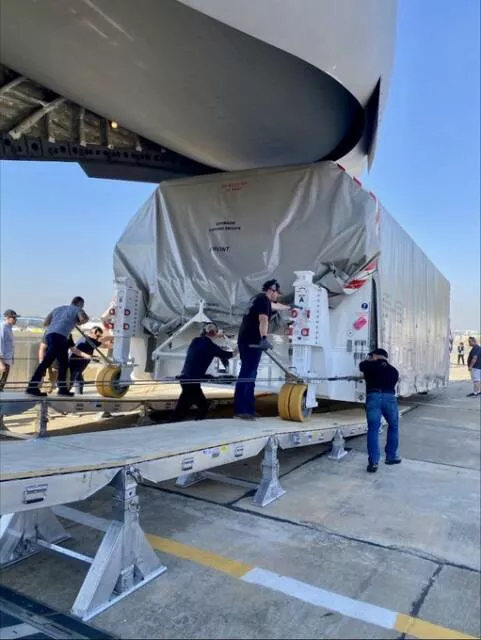A US Air Force C17 recently brought the NASA-ISRO Synthetic Aperture Radar (NISAR) payload to Bengaluru from California.
NISAR is a Low Earth Orbit observatory jointly developed by NASA and ISRO, which will map the entire globe in 12 days and provide spatially and temporally consistent data for understanding changes in Earthís ecosystems, ice mass, vegetation biomass, sea level rise, groundwater and natural hazards, including earthquakes, tsunamis, volcanoes and landslides.
Touchdown in Bengaluru!¬†@ISRO¬†receives NISAR (@NASA-ISRO Synthetic Aperture Radar) on a¬†@USAirforce¬†C-17 from¬†@NASAJPL¬†in California, setting the stage for final integration of the Earth observation satellite, a true symbol of¬†#USIndia¬†civil space collaboration.¬†#USIndiaTogetherpic.twitter.com/l0a5pa1uxVó U.S. Consulate General Chennai (@USAndChennai)¬†March 8, 2023
NISAR carries L and S dual-band Synthetic Aperture Radar (SAR), which operates with the Sweep SAR technique to achieve large swaths with high-resolution data. The SAR payloads mounted on Integrated Radar Instrument Structure (IRIS) and the spacecraft bus are together called an observatory.
Engineers and technicians at Jet Propulsion Laboratory (JPL) in Southern California have been integrating and testing NISARís two radar systems ó the L-band SAR provided by JPL and the S-band SAR built by ISRO.
NASA said the SUV-size payload would be moved into a special cargo container for a 14,000-kilometer flight to Bengaluru.
The final integration of NISAR will be carried out at the U.R. Rao Satellite Centre in Bengaluru, and ISRO is looking to launch the satellite in 2024 from Satish Dhawan Space Centre in Sriharikota.
Stay updated with all the insights.
Navigate news, 1 email day.
Subscribe to Qrius

